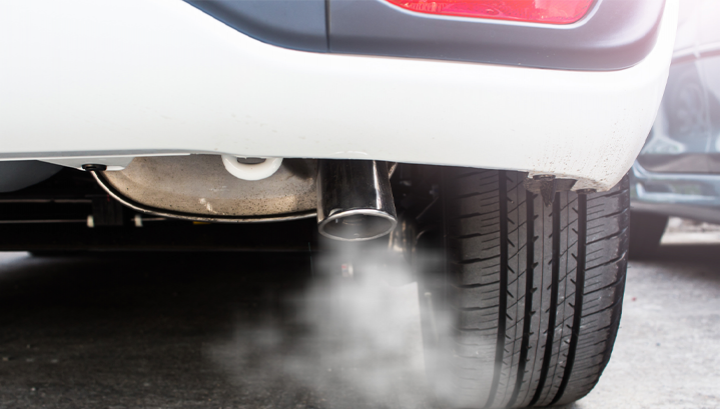Introduced on 1st April 2019, Streamlined Energy and Carbon Reporting (SECR) requires approximately 12,000 qualifying businesses to report annually on their electricity, gas, and transport energy use, along with the associated carbon emissions. This information is to be included in the Director’s Report submitted to Companies House.

Qualifying organisations, including quoted companies and large unquoted companies and LLPs, must report these elements for the first time for financial years starting on or after 1st April 2019. Part of the requirement for this reporting is the inclusion of fuels consumed in transportation devices such as automobiles, trucks (including fork-lifts), buses, trains, airplanes, boats, ships, barges, vessels, etc; or those, such as mobile plant or cranes, used for construction or excavation activities.
A new challenge
Reporting on energy usage of buildings might be straightforward for the majority of qualifying companies but reporting on transport emissions has already proven to be difficult. Those businesses who have had ESOS to contend with will have already reported on their transport energy use. However, for many businesses, reporting on transport data is a completely new challenge.
In order to remain compliant, you must include consumption from transport where your organisation utilises the fuel for business purposes. This means that you should include data on any vehicles that are owned or operated by your business, including where you reimburse your employees via mileage payments for business journeys made in personal vehicles. However, guidelines state that you do not need to report on fuel where a transportation service is procured. For example, reporting on train, air and even taxi journeys is currently voluntary.
Grey fleet
Those who experienced ESOS will know that a key problem area that businesses are facing is their grey fleet – that is employees’ personal vehicles that are used for business purposes. Unless transport forms a significant part of your operation, it is likely that you don’t have a fleet management system, and certainly won’t for any grey fleet consumption. Therefore, consideration of what transport data is captured, and how this is recorded will be instrumental to be able to demonstrate year on year improvements. After all, you can’t manage what you can’t measure.
Inspired Energy’s Client Optimisation Manager, Emma Hird, comments:
“Fuel consumption and related emissions, in their most accurate form, should be calculated in litres of fuel. Collecting this data should be easily transferable for firms that refuel within their own business infrastructure or use fuel cards and it will simply be a case of moving a dataset that is already captured within the business into the SECR report.
“But for other firms, in particular those with a larger grey fleet element, the best approach will be to use expensed mileage combined with fuel purchases where recorded by the business and create a reliable representation of overall usage.
“It’s important for businesses to endeavour to demonstrate their emissions in the most accurate form possible. In order to do this, mileage can be combined with specific vehicle factors, perhaps not usually recorded by the business, to increase the accuracy of the reporting. There is huge scope for businesses to show continuous improvement in this regard – by increasing the accuracy of the transport data collected, businesses are able to demonstrate their commitment to measuring accurately their total carbon footprint, the first step on their journey to Net Zero.”
Those in charge of collating transport data should ensure that any personal mileage, or fuel associated with personal travel is deducted when compiling your business fuel consumption figure.
Electric vehicles
Companies with fully electric vehicles should take care not to double count their data. Energy consumption from company electric vehicles charged on site tends to be included within the building energy, with submetering in this field still a growing area.
If it is possible for the business to quantify the electricity utilised in charging the vehicles, this can be reported separately as Scope 2 emissions associated with transport. It is important to ensure that this electricity usage is deducted from the overall building electricity consumption if this route is taken, otherwise the business will be overreporting – something no-one wants to do when it comes to emissions.
SECR with substance
This year may be the first time you have been asked to report on your energy consumption, and if you’re not already collating your energy data then it can be a time-consuming process to get the data you need. You’ll also need to identify an appropriate intensity metric, which can be tricky. With the end of the financial year fast approaching for a number of businesses, time is of the essence to ensure that your reporting will be complete and compliant in time for the submission deadline.
The truth is that those who see SECR as simply a box-ticking exercise are likely to find it costly and time-consuming. However, energy managers and finance professionals can use SECR as an opportunity to futureproof their business and add value for their stakeholders by showing how they’re acting on recommendations.
Remember, your SECR report is included within a public document so it’s important to consider how your customers will perceive the information you provide, as a narrative outlining the measures you have taken to boost your energy efficiency must be included. Customers are increasingly expecting businesses to focus on sustainability, and with increased visibility within your annual report you should be looking seriously at the actions you can take to cut your emissions and improve your efficiency.
If you’re currently getting to grips with carbon reporting, call our optimisation team on 01772 689 250 for help and get SECR off to a smooth start.
N.B. The information contained in this entry is provided by the above supplier, and does not necessarily reflect the views and opinions of the publisher


